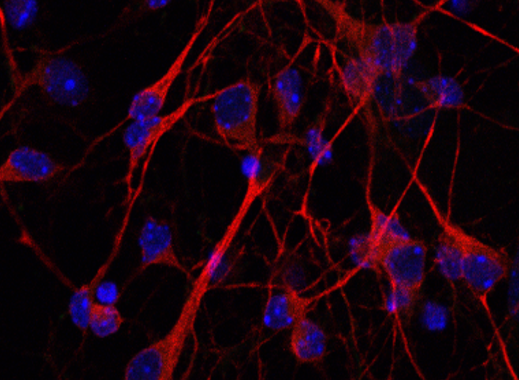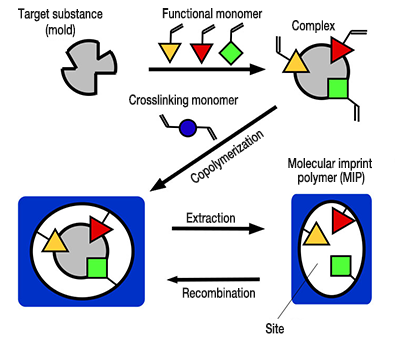Osamu Kitagawa
-Applied Chemistry
Yasuo Yoshimi
-Applied Chemistry
Akihiko Hatano
-Chemistry
Hitoshi Muguruma
-Electronic Engineering
Atsushi Saitoh
-Communications Engineering
Keita Hamazaki
-Applied Chemistry
Yoshitomo Suhara
-Bioscience and Engineering
Kouji Fukui
-Bioscience and Engineering
Yoshihisa Hirota
-Bioscience and Engineering
Nobuo Watanabe
-Bioscience and Engineering
Akihiko Hanafusa
-Bioscience and Engineering
Application of fat-soluble vitamin derivatives to new diseases such as application of vitamin K, a therapeutic agent for osteoporosis, to cranial nerve diseases, efficacy of vitamin E, which is a therapeutic agent for peripheral nerve circulation disorder, for dementia, Positioning) aiming at research. In addition, focusing on the influence on the autonomic nervous system such as smell and taste, we develop a neuroactive agent with an action mechanism that has never before been applied using kansei science.
Development of a method for evaluating erythrocyte deformability and platelet adhesiveness leading to a diagnostic method for circulatory diseases, development of new diagnostic methods that developed results concerning verification of advanced surgical treatment for brain tumor, development of molecular imprinted polymer MIP) Develop an instant sensor for compact and low cost therapeutic drug monitoring (TDM) that recognizes and measures drug concentration in the blood by capturing the current change of the fixed electrode.
Establish new diagnostic and therapeutic methods from both viewpoints of drug discovery and drug repositioning and development of new diagnostic methods and sensors for TDM.
1.Drug repositioning of fat-soluble vitamin derivatives

1−1.Application of vitamin K to cranial nerve disease
・Search, identification and purification of target proteins for neuronal differentiation of brain neurons using genomic editing technology
・Search for derivatives with high binding capacity for target protein by in silico analysis
・Synthesis of novel vitamin K derivatives, evaluation of differentiation promoting action of neural stem cells into neurons using iPS cells
・Evaluation using model animals, determination of physiologically useful new vitamin K derivatives
・Patent application of derivative, cooperation by open innovation
1−2.Efficacy of Vitamin E against dementia
・Examination of effectiveness against dementia, elucidation of mechanism
・Identification of effective target protein for dementia treatment, determination of efficacy
・Patent application of derivative, cooperation by open innovation

2.Development of Neuroactive Agents Using Kansei Science
・Elucidation of intermolecular interaction between astringent compound and target molecule
・Proof of action mechanism by knockout mouse
・Generation of compounds designed based on analysis results, evaluation by model animals
・Patent application of derivative, cooperation by open innovation, development

3.Establishment of new diagnostic method by medical device development
3−1.Development of diagnostic method applying red blood cell deformability and platelet adhesion ability evaluation method
・Development of blood cell capacity diagnostic method, verification of relevance to health condition
・Collaboration with medical device manufacturers for diagnostic device development
・Patent acquisition of blood cell capacity diagnostic method
・Development of techniques for removing organ tumor such as brain, stomach and the like through collaboration with medical institutions and companies, validation of validity
3−2.Instant sensor to recognize and measure drug concentration in blood
・Development of MIP showing reproducible response to heparin (anticoagulant) and vancomycin (antibiotic)
・Design of MIP fixed electrode in response to edoxaban (oral anticoagulant) and phenytoin (antiepileptic agent)
・Flexibility of sensor with new carbon electrode, high sensitivity
・Development of novel functional monomers with high affinity for each drug
・Development of a novel signal processing method for drug concentration detection in blood
Active vitamin D can form soft wheat without going through the receptor!
Comparison of vitamin D synthase (Cyp27b1) and vitamin D receptor (Vdr) genetic lesioned mice shows that 1α, 25-dihydroxy vitamin D3 which is active vitamin D forms soft tints without Vdr
■Outline of research
Vitamin D exerts various physiological actions via the vitamin D receptor (VDR), but in recent years it has been reported that vitamin D does not involve VDR in a new way. Therefore, in this study, we compared the phenotype of genetically injured mouse (Cyp27b1-/-) and Vdr loss mouse (Vdr-/-) of CYP27B1 which is a key enzyme for synthesis of activated vitamin D (1α, 25D3) Did. As a result, it was suggested that 1α, 25D3 directly regulates the proliferation and differentiation of soft cells, not via VDR.
Neuronal differentiation activity was altered with vitamin K derivatives modified at side chain ends!
Synthesis of Novel Vitamin K Derivatives Containing Alkylated Phenyl Groups in the ω-Terminal Side Chain and Evaluation of Neuronal Differentiation Activity
■Outline of research
Vitamin K exercises various physiological actions such as coagulation of liquor and formation of staple. In recent years, it has been reported that vitamin K is present in a considerably large amount in the brain, and it has been found that it has a function to induce differentiation from neural progenitor cells to neurons. We also found that the side chain end structure of vitamin K strongly influences neuronal differentiation. Therefore, in this study, we synthesized a new vitamin K derivative which introduced an alkylated phenyl group at the end of vitamin K side chain (Fig.1) and evaluated its differentiation inducing activity to neurons. As a result, we found a derivative that reduces or increases differentiation-inducing activity to neurons. The results of this experiment will be useful information in the future as we aim to apply it to future drugs for treating neurodegenerative diseases.

